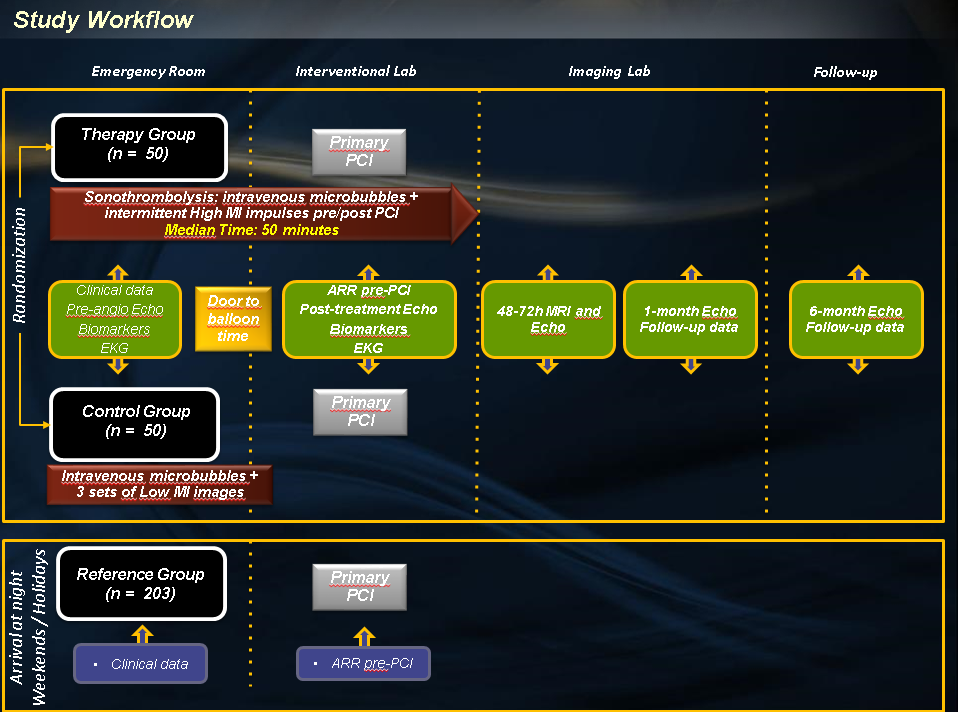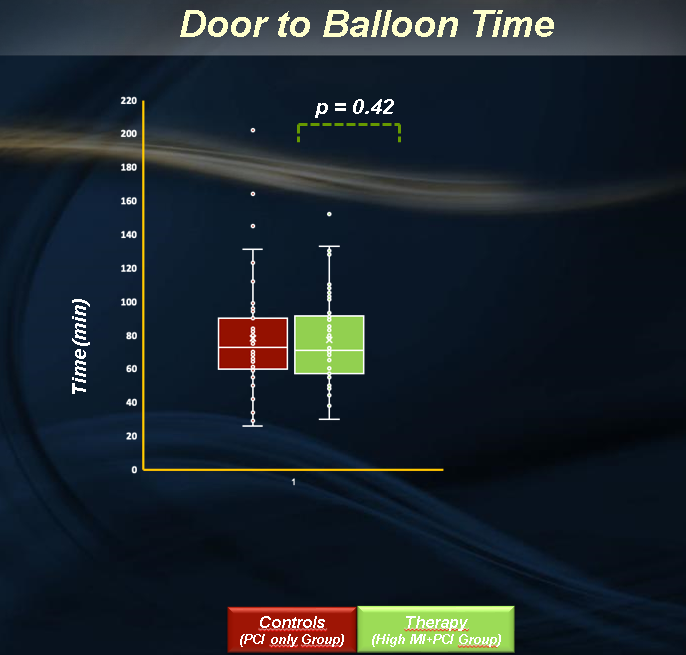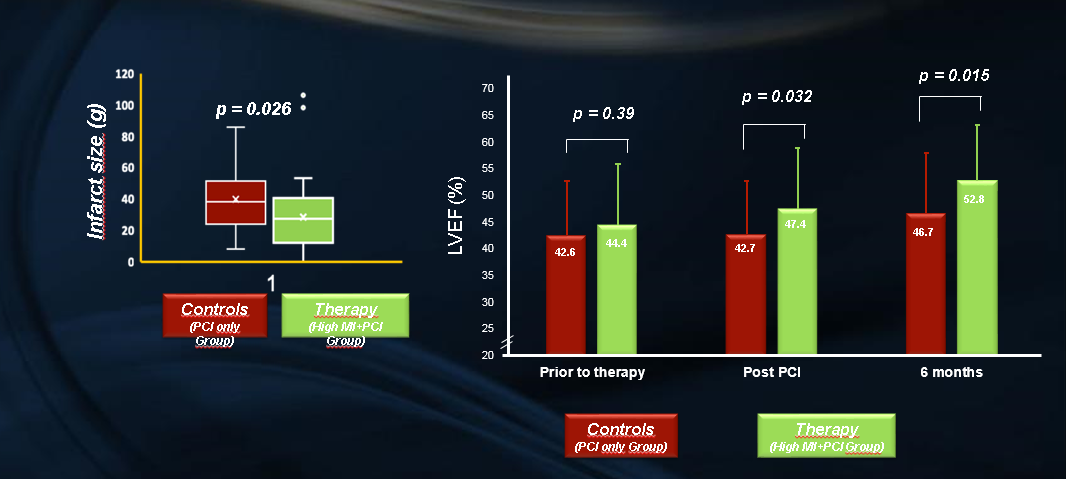Sonothrombolysis in ACS
Ultrasound-induced microbubble cavitation generates shear that can be utilized to dissolve thrombi.1 Preclinical trials involving atherosclerotic porcine models of acute ST-segment elevation myocardial infarction (STEMI) have demonstrated that diagnostic transthoracic ultrasound-guided high mechanical index (MI) impulses, applied during a continuous commercially available microbubble infusion, were effective at improving both epicardial and microvascular flow.2 These short pulse duration, high MI impulses were also found to be effective in pilot studies of humans with STEMI. Applying the high MI impulses during a 3% Definity (Lantheus Medical Imaging; North Billerica, MA) infusion prior to emergent percutaneous coronary intervention (PCI) in STEMI patients appeared to improve coronary artery recanalization as well as microvascular flow and systolic function at 6 month follow-up.3 Longer pulse duration impulses (20 mcs instead of 3-4 mcs) had been shown to be more effective in vitro in dissolving thrombi1 but caused unwanted side effects such as coronary vasoconstriction in preliminary human STEMI trials.4 Therefore, the first randomized clinical trial exploring the safety and efficacy of sonothrombolysis involved applying diagnostic high MI short-pulse-duration (3-4 mcs) impulses before and after emergent PCI in 100 patients with their first STEMI arriving at the Sao Paulo Emergency Department (Figure 1) in a single-center study. Fifty of these patients were randomized to pre- and post-PCI sonothrombolysis using a 1.8 MHz diagnostic imaging transducer operating at very low MI (<0.2) in real time. When microbubbles were visualized within the risk area and normal myocardium, high MI (1.1-1.3) impulses were applied in the apical four-, three-, and two-chamber windows. This process was repeated until reaching the cardiac catheterization laboratory. The same imaging protocol was repeated post-PCI for a total treatment period of 50 minutes. The control group received PCI only. The angiographic recanalization rates prior to PCI, ST-segment elevation change on electrocardiogram, microvascular perfusion score by very low MI imaging, infarct size by cardiac magnetic resonance imaging (MRI) at 48-72 hours post-STEMI, and the improvement in left ventricular ejection fraction (LVEF) at 1 and 6 months were compared between groups. A second reference group of 203 patients arriving with STEMI outside the time period when ultrasound was available was utilized for demographic and angiographic comparison.
Figure 1: Workflow for the First Randomized Clinical Trial Exploring the Efficacy of Diagnostic Sonothrombolysis During a Continuous Microbubble Infusion (Definity)
The addition of pre-PCI sonothrombolysis did not interfere with door-to-balloon times (Figure 2).
Figure 2: Door-to-Balloon Time in the Sonothrombolysis (High MI + PCI) Group Compared With Controls
Angiographic recanalization prior to PCI of the epicardial vessel with Thrombolysis in Myocardial Infarction grades 2 and 3 flow was achieved in nearly 48% of the patients randomized to sonothrombolysis compared with 20% in the control group and 21% in the reference group (p < 0.001). ST-segment resolution was also observed more frequently with sonothrombolysis when compared with the PCI-only group before (p < 0.001) and after PCI (p < 0.01). This corresponded to improved microvascular perfusion within the risk area in the high MI sonothrombolysis group. Figure 3 demonstrates the improvement in microvascular perfusion after 12 minutes of intermittent high MI impulses in a patient with an anteroseptal STEMI.
Figure 3
Cardiac MRI at 48-72 hours demonstrated a reduced infarct size by delayed enhancement imaging in the sonothrombolysis group (Figure 4). Although LVEF was similar between groups prior to randomization, LVEF improved significantly in the sonothrombolysis group post-PCI and remained higher than the control group at 6 months follow-up (Figure 4).
Figure 4
We also noted that LVEF <30% at 6 months post-PCI was more frequently seen in the control group (8/44 patients) compared with the sonothrombolysis group (2/44 patients; p = 0.045). These data indicate the potential for diagnostic ultrasound high MI impulses and a commercially available microbubble infusion to reduce microvascular obstruction and enhance myocardial recovery following an acute STEMI. New trials are attempting to utilize ambulance delivery of sonothrombolysis to determine if faster delivery of sonothrombolysis prevents myocardial infarction and scar formation in acute STEMI.
References
- Chen X, Leeman JE, Wang J, Pacella JJ, Villanueva FS. New insights into mechanisms of sonothrombolysis using ultra-high-speed imaging. Ultrasound Med Biol 2014;40:258-62.
- Wu J, Xie F, Lof J, Sayyed S, Porter TR. Utilization of modified diagnostic ultrasound and microbubbles to reduce myocardial infarct size. Heart 2015;101:1468-74.
- Mathias W Jr, Tsutsui JM, Tavares BG, et al. Diagnostic Ultrasound Impulses Improve Microvascular Flow in Patients With STEMI Receiving Intravenous Microbubbles. J Am Coll Cardiol 2016;67:2506-15.
- Roos ST, Juffermans LJ, van Royen N, et al. Unexpected High Incidence of Coronary Vasoconstriction in the Reduction of Microvascular Injury Using Sonolysis (ROMIUS) Trial. Ultrasound Med Biol 2016;42:1919-28.
- Mathias W Jr, Tsutsui JM, Tavares BG, et al. Sonothrombolysis in ST-Segment Elevation Myocardial Infarction Treated With Primary Percutaneous Coronary Intervention. J Am Coll Cardiol 2019;73:2832-42.
Keywords: Acute Coronary Syndrome, Myocardial Infarction, Microbubbles, Ambulances, Cicatrix, Coronary Vessels, Control Groups, Stroke Volume, Follow-Up Studies, Random Allocation, Vasoconstriction, Electrocardiography, Percutaneous Coronary Intervention, Fluorocarbons, Ultrasonography, Magnetic Resonance Imaging, Myocardium, Echocardiography, Emergency Service, Hospital, Demography, Cardiac Catheterization
< Back to Listings




